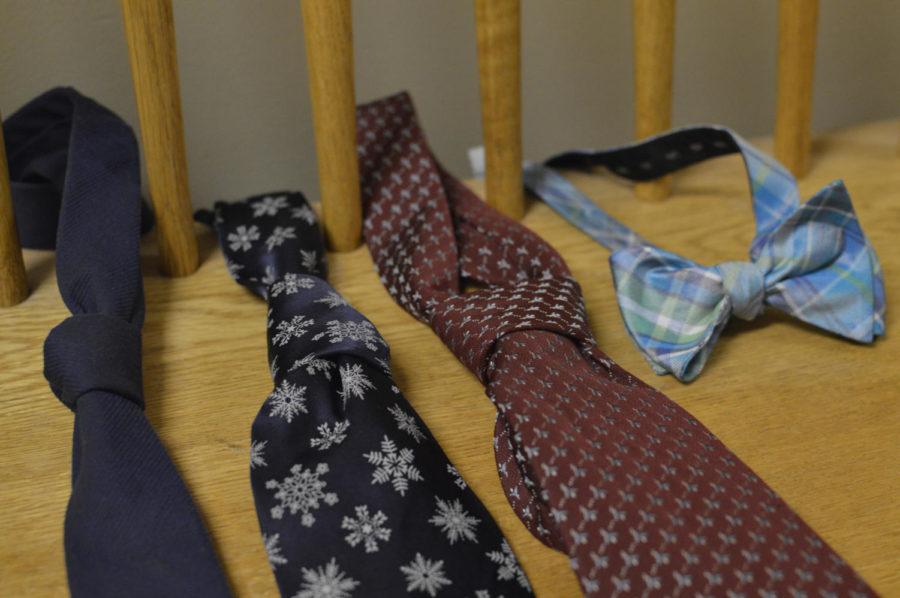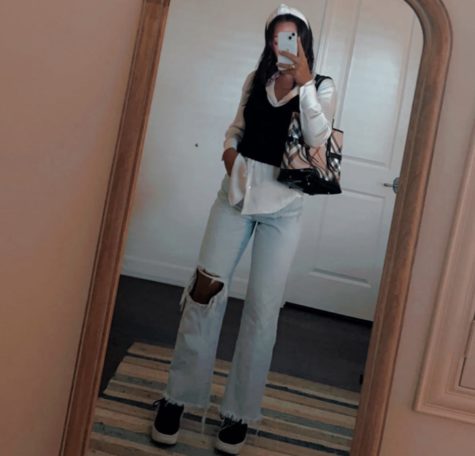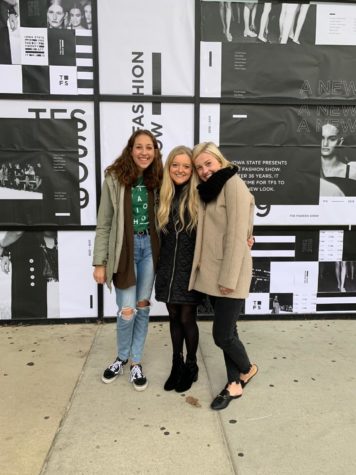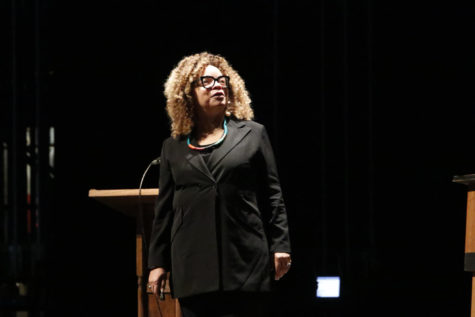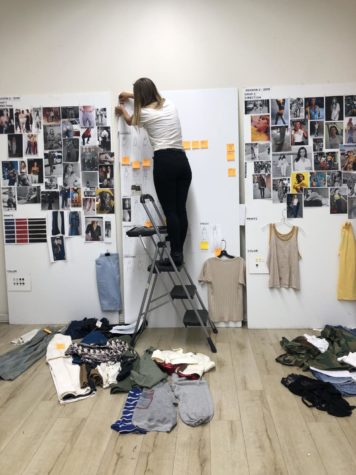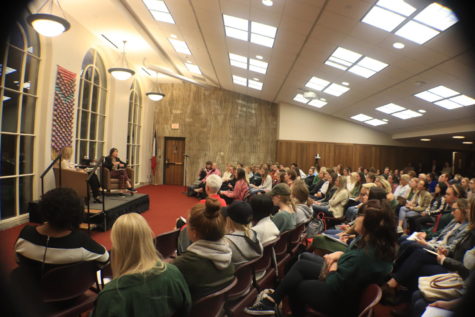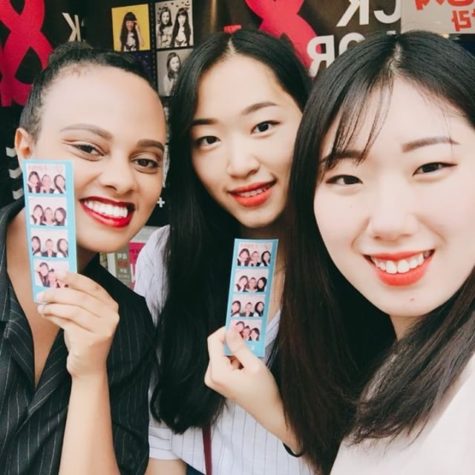All tied up
Different knots are associated with different occasions. Four-in-hand (L), half-Windsor, full-Windsor, bow-tie (R).
December 8, 2015
With Thanksgiving behind, it’s time for the festive parties to celebrate the holiday season. While women search for glitzy cocktail dresses, men are tasked with finding an appropriate tie. Although the tie itself is an important component of an outfit, the knot also says a lot about a man. Actually tying a tie is one of the main challenges of dressing for a formal event. Some knots correspond to specific events and knowing which to choose and doing it correctly will separate the men from the boys. The four most common tie knots are the four-in-hand, half-Windsor, full-Windsor and bow tie.
The four-in-hand
The four-in-hand knot is one of the most common tie knots. It’s also known as one of the easiest to master. This knot is used for less formal events such as parties or other social gatherings because of its asymmetrical appearance and smaller shape.
Skinny and medium-width ties work best with this knot. Start by draping the tie around the neck, making sure the wide end is halfway past the narrow end. Cross the wide end across the narrow end, bring it to the front and continue to wrap it around. Bring the wide end up through the loop created in the neck and feed it back through the knot. Hold on to the narrow end and adjust until the knot is snug to the collar.
Half-Windsor
The half-Windsor is a wider knot and is suitable for just about any occasion, but more formal than the four-in-hand knot. Since this is a symmetrical knot, it is harder to do correctly on the first try.
It looks best when paired with slightly wider ties of medium- to heavy-weight fabric. Start with the wide end on the right draping slightly lower than the narrow end. Bring the wide end across the narrow end, wrapping it around the back. Take the wide end down the loop between the neck and tie. Bring the wide end across from right to left, over the existing knot, then through the loop again. Take the wide end and slide it through the first loop in the knot and adjust with the narrow end.
Full-Windsor
The full-Windsor, also known as the Windsor, is a large knot used for formal occasions. It’s commonly paired with a long, thick tie and spread collar shirt.
Start with the wide end on the right draped a foot longer than the narrow end. Cross the wide end over the front of the narrow end, wrap it around the back and slip it through the loop between the tie and collar. Pass the wide end behind the narrow end from left to right. Slip the wide end through the loop again and down. Bring the wide end across the front of the knot, then up and through the loop once more. Tuck the wide end through the top of the knot and tighten by pulling the narrow end until the knot is fitted against the collar.
Bow tie
The bow tie is one of the most challenging knots, but can be achieved with gentleman’s skill in seven steps. Drape the bow tie over the neck with one side slightly longer than the other. Take the long end across the short end and through the loop between the neck and tie. Fold the short end into the shape of a bow, pinching it against the neck. Pull the long end over the middle of the bow and fold both sides together. Take the top of the long end and slip it through the hole in the bow. Adjust the bow by pulling on both sides until it takes shape.
The holiday season will now be a breeze with this handy tie guide.

